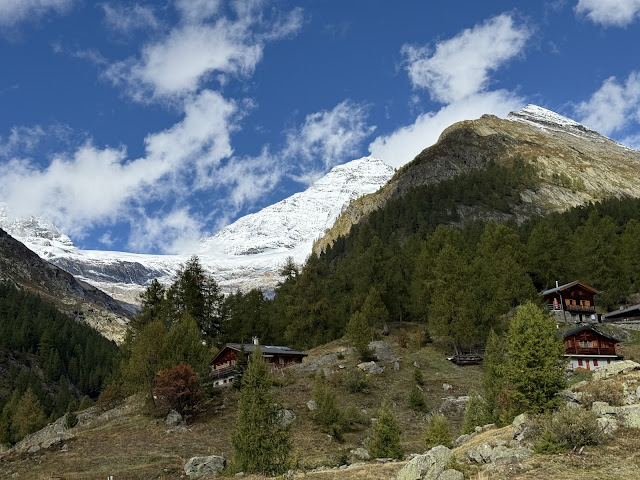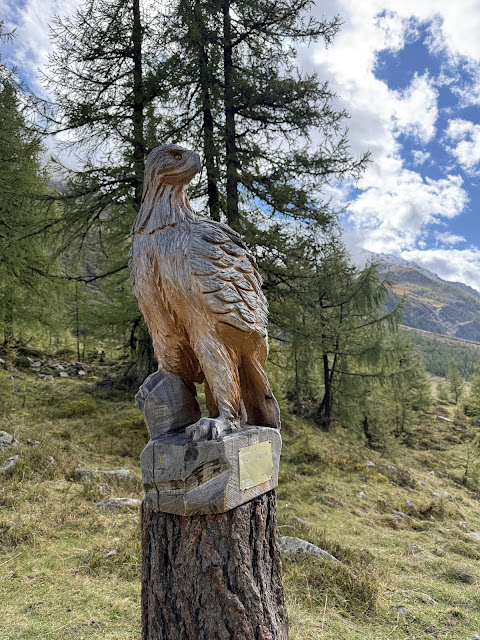Since I have started to pepper the October season with our travel blogs, I would like to tell you more about the Löschental. You may remember that we had just arrived when a sheep gave birth to two lambs.
Let's start at the beginning though. We had to get there first, and how did we do that?
The "Autoverlad" is a unique transportation system that allows cars and other vehicles to be loaded onto a train, which then transports them through the mountains. This particular route, between Kandersteg and Goppenstein, runs through the Lötschberg Tunnel, a 14.6km (9-mile) tunnel through the Swiss Alps.
Here’s how it works: drivers park their cars on open train carriages, and instead of navigating the steep, winding roads over the mountains, they sit inside their vehicle as the train takes them through the tunnel. While it’s definitely a time-saver, relaxing isn’t always easy—the tunnel is long and pitch-black, with only the sound of the train echoing through the darkness. Once you emerge on the other side, though, you can simply drive off and continue your journey, avoiding the challenging alpine roads.
Switzerland is famous for its extensive, well-marked network of hiking paths, which crisscross the country, including the Alps. These trails range from easy walks through valleys to challenging alpine routes, all meticulously maintained and signposted.
What sets Swiss "Wanderwege" (hiking trails) apart from other places' is the country's commitment to making the outdoors accessible for everyone. Trails are clearly marked with yellow signs that indicate distances and times, making it easy for hikers of all levels to navigate. This network connects mountain huts, scenic viewpoints, villages, and even railways, allowing for seamless exploration of Switzerland's natural beauty. It’s a way of life for many Swiss people, who often hike as a regular activity, and it attracts outdoor enthusiasts from all over the world.
"Steinmännchen" are small, human-like cairns or stone piles that hikers often build along trails, creeks, or on mountain summits in the Alps, including in Switzerland. These stacks of stones have a long tradition and serve multiple purposes.
Originally, they were used as trail markers in rocky, hard-to-navigate areas, helping hikers find their way when formal signage was absent. Over time, building them has become a symbolic activity for many hikers, representing a moment of connection with nature, a way of leaving a mark without causing harm, or simply a fun challenge.
This small region was wonderful to explore. More ambitious hikers could hike up to the actual glacier. For us, the walk to the lake was just enough. Apart from that, there is also a mini golf course, but it only has limited opening hours in the fall. So it was a good time for us to move on.
Would you enjoy exploring a less touristy but beautiful area like this one?

















I love how you captured the beauty of nature and the rich culture of the region.
ReplyDeleteHey Tamara, love your post! Thanks for the tour. Your photos are beautiful. I want to come and see.
ReplyDeleteI would LOVE to explore this area Tamara, when should I arrive? LOL Your photos make it feel like I'm there and putting your vehicle on a train sounds interesting! I'm just curious, what phone/camera do you have, such professional looking photos.
ReplyDeleteThank you for sharing these lovely adventures, Tamara - the views are stunning - and the train seems a wonderful option for mountain travel!
ReplyDeleteYour hike sounds invigorating - I'm reminded of reading Heidi, and how and loved her grandfather's home in the alps, and walking in the fresh air!
Nadya